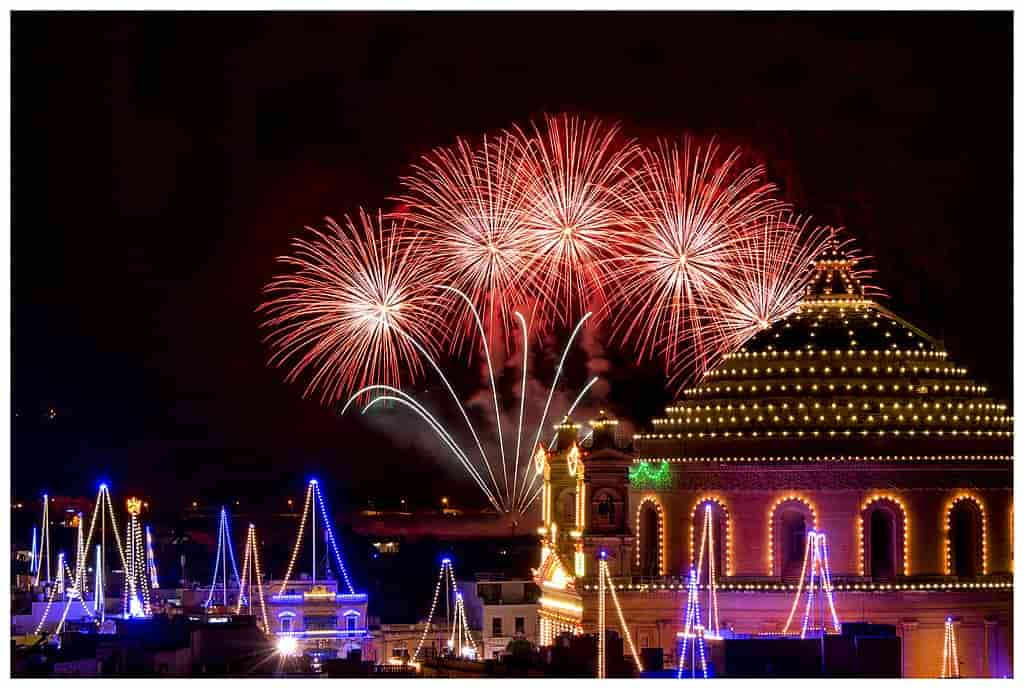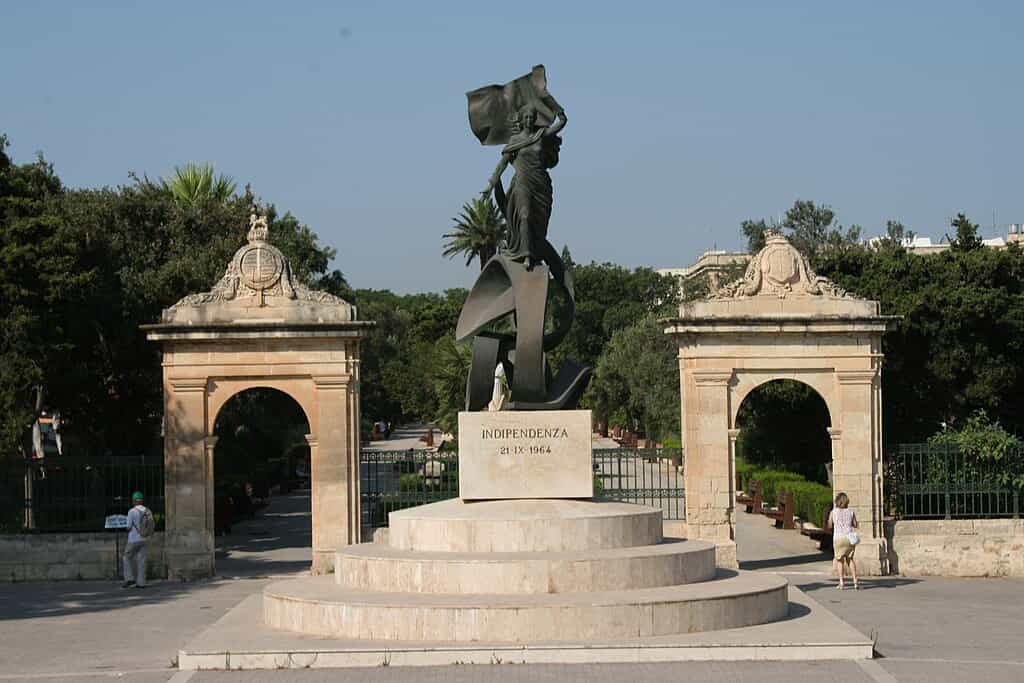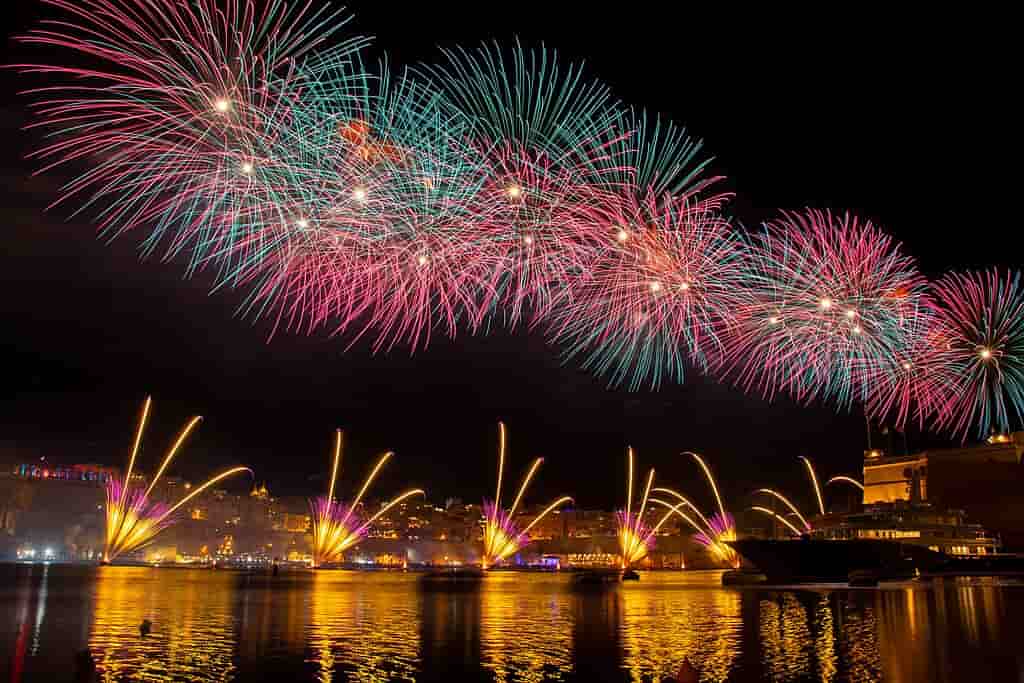Malta, the small Mediterranean gem located in southern Europe. Renowned for its history and vibrant culture. One way the island’s cultural heritage is honoured is through its public holidays. These year-round holidays are a mix of national and religious events.
Public holidays are days when people come together to celebrate important events. Being religious occasions and historical moments. Reflecting the island’s deep Catholic faith and highlighting historic milestones.
On Religious holidays the island celebrates its Catholic traditions. Whilst, National holidays constitute key events in Maltese history. Its journey towards independence and self-identity. On these days, the Maltese National Flag flies high on public buildings.
How do Malta public holidays impact daily routines? Entertainment venues, restaurants and bars remain unaffected by public holidays. Retail stores in tourist areas also stay open. Most supermarkets operate but may have reduced hours. Pharmacies follow a restricted schedule. Some tourist attractions and museums may be closed. It’s advisable to check their schedules in advance. Banks, offices, schools and government agencies are closed.

Religious Holidays in Malta
- New Year’s Day (January 1st)
Like many other countries, Malta celebrates New Year’s Day on January 1st. It is ushered in with an amazing fireworks display. Along with a popular festival and celebrations in Valletta. It marks the beginning of the new year. A time for new beginnings and resolutions. People in Malta and Gozo spend this day with family and friends. Celebrating at a relative’s home or eating out at a restaurant. Reflecting on the past year and looking forward to the year ahead.
- Feast of St. Paul’s Shipwreck (February 10th)
The Feast of St. Paul’s Shipwreck is a significant religious holiday. It commemorates the event in 60 AD when Saint Paul was shipwrecked on the island. He brought Christianity to Malta. This day is marked by church services, processions and celebrations in Valletta. The story of St. Paul’s shipwreck is a central part of Malta’s Christian heritage.
- Feast of St. Joseph (March 19th)
The Feast of St. Joseph is another important religious holiday. St. Joseph is the patron saint of workers and the protector of the family. On this day, many Maltese people attend church services. The town of Rabat, in particular, has a grand celebration. A procession with the statue of St. Joseph passes through the streets. Together with a marching band creating a joyful atmosphere.
This is the ideal time to enjoy outdoor activities in Malta. Hike along beautiful trails. The most popular include Mellieħa, Baħrija, Siġġiewi and Mdina. Explore Malta’s archaeological sites or plan a picnic with family and friends.
- Good Friday (Varies)
Good Friday is a solemn day in Malta. Marking the passion and crucifixion of Jesus Christ. Observed with deep respect and reflection. In the early evening, many towns and villages hold processions. Where participants re-enact the events of the Passion of Christ. These processions are elaborate. With some participants carrying statues depicting scenes from the Passion. While others dress in costumes representing Biblical figures.
- Easter Sunday (Varies)
Easter Sunday marks the resurrection of Jesus Christ. A day of joy and celebration. It is customary for people to attend Mass. The streets come alive with a festive atmosphere. Families gather for a special lunch. Children are given gifts of chocolate Easter Eggs and ‘Figolli’. A ‘Figolla’ is a traditional Maltese Easter pastry filled with almonds. It has the shape of an animal, heart or other figure.
- Feast of St. Peter and St. Paul (June 29th)
This day honours the martyrdom of Saint Peter and Saint Paul. Also known in Maltese as ‘L-Imnarja’. It is an important national holiday, observed with religious ceremonies and celebrations. Traditional festivities occur in Buskett and Rabat. On the eve, folk singing is held at Buskett Gardens. Where people can enjoy the traditional fried rabbit dish. On the day itself, horse races are held at Saqqajja Hill in Rabat.
- Feast of the Assumption (August 15th)
The Feast of the Assumption, locally known as ‘Il-Festa ta’ Santa Marija’. Is one of the most significant religious holidays in Malta. It marks the Virgin Mary’s assumption into heaven at the end of her life on earth. The day is celebrated with great fervour across the island. Especially in the towns of Mosta, Mqabba, and Qrendi. Where large village feasts are held, featuring impressive firework displays.
On the same day, Malta commemorates an important historic event. A British convoy under Operation Pedestal entered Malta’s Grand Harbour. Saving the Maltese from starvation towards the end of World War II. This important event increased the devotion of the Maltese towards the Virgin Mary.
- Feast of the Immaculate Conception (December 8th)
The Feast of the Immaculate Conception is another important religious holiday. Celebrating the belief that the Virgin Mary was conceived without original sin. It is marked by church services for Catholic worshippers. This feast holds special significance in the town of Cospicua. Where the feast is observed with deep devotion.
- Christmas Day (December 25th)
Christmas Day is a major holiday in Malta, celebrating the birth of Jesus Christ. Maltese homes and streets are decorated with beautiful festive decorations. Nativity scenes, known as ‘presepji,’ are also very popular. These are displayed in public spaces, churches and homes. Christmas activities and events take place all around the island.
On Christmas Eve, many villages and towns hold a procession. Where children carry a statue of Baby Jesus through the streets. This tradition traces its origins to San Ġorġ Preca. Midnight Mass is a key event of the evening. On Christmas Day, families come together at noon for a special lunch and to exchange gifts. The meal often features traditional dishes such as roast turkey and Christmas log.

National Holidays in Malta
- Freedom Day (March 31st)
Freedom Day commemorates the 1979 withdrawal of British Forces from Malta. Marking the end of 179 years of British military presence on the island. The day is marked with various events, including a regatta in the Grand Harbour. Together with a wreath-laying ceremony at the Freedom Day Monument in Birgu. It is a proud occasion for the Maltese people, honouring their sovereignty.
- Labour Day (May 1st)
Labour Day in Malta is celebrated on May 1st, like in many other countries worldwide. Also referred to as Workers’ Day. It is a day dedicated to honouring workers and advocating for a positive work environment. The occasion features speeches, parades and events organised by various political parties.
May 1st also marks the anniversary of Malta’s full membership in the European Union. On the 30th April, a spectacular fireworks show is held at the Grand Harbour.
On this day, many people take the opportunity to relax and spend quality time with their families. The weather during this time of year is delightful. Creating a vibrant atmosphere across the island, making it one of the best times to visit Malta.
- Sette Giugno (June 7th)
Sette Giugno commemorates the events of June 7, 1919. When Maltese citizens protested against British rule. On the day, the British troops fired on the crowd resulting in the deaths of four Maltese men. The day is remembered as a significant moment in Malta’s struggle for self-government. Being its first step towards independence. Ceremonies are held at the Sette Giugno Monument in Valletta. It is a day of reflection on Malta’s journey towards independence.
- Victory Day (September 8th)
Victory Day, also known as ‘Il-Vitorja’, is a national holiday. It is a two-fold feast for the Maltese. Being a national and religious holiday.
First, it marks the end of three sieges in Malta’s history. The Great Siege of 1565, the French blockade of 1800, and the end of the Axis blockade in World War II in 1943. The day is celebrated with the traditional regatta races in the Grand Harbour. Along with various ceremonies conducted by Maltese dignitaries across the island. It is a day of national pride. Honouring the resilience and courage of the Maltese people throughout their history.
Second, it is also the birth date of the Virgin Mary. The Maltese have a great devotion towards the Virgin Mary. Most of her life’s significant milestones are public holidays in Malta. On this day, 3 villages in Malta and 1 in Gozo celebrate this religious feast with great joy.
- Independence Day (September 21st)
Independence Day is one of the most significant national holidays. Known in Maltese as ‘Jum l-Indipendenza’. It marks the day in 1964 when Malta gained independence from British rule.
The day is marked by parades, fireworks and various events in Floriana and Valletta. A monument in Floriana honours this significant milestone in Malta’s history. Independence Day serves as a time for the Maltese people to celebrate their freedom and national identity.
- Republic Day (December 13th)
Republic Day, or ‘Jum ir-Repubblika’, is another key national holiday. It commemorates the day in 1974 when the State of Malta became a republic. With the British monarch no longer the head of state. Instead, the President of Malta became the head of state.
Official ceremonies take place every year on its anniversary. Including a parade by the Armed Forces of Malta. Along with the laying of wreaths at the Republic Monument in Valletta. It is a day of national pride and a celebration of Malta’s republican status. On the day, the President of Malta honours several people who brought success for Malta.

Cultural Significance
National and public holidays in Malta are more than days off work or school. They are deeply rooted in the island’s culture and history. Reflecting the strong religious beliefs and the national identity of the Maltese people. These holidays are opportunities for families to unite. For communities to strengthen their bonds. Allowing the nation to celebrate its heritage and achievements.
The Religious holidays, in particular, highlight Malta’s deep Catholic faith. Mass and other religious ceremonies play a central role. In the way, these holidays are observed. They are a time for reflection, prayer and celebration of the Christian faith. Which has played an important role in shaping Malta’s history and culture.
National holidays, in contrast, are a reminder of Malta’s journey towards independence. They celebrate the struggles and victories that have shaped the nation. Fostering a sense of pride and unity among the Maltese people. Highlighting their shared history and values that define their identity as a nation.
Modern Celebrations
Public holidays are celebrated with a mix of traditional customs and contemporary activities. While religious processions and ceremonies continue to be central to the observance. There are also concerts, fireworks displays and cultural events to draw people. The streets are often bustling with people enjoying the festive atmosphere.
The tourism industry in Malta also plays an important role during these holidays. Many tourists visit Malta to experience the unique celebrations. Especially during major holidays like Easter, Christmas and Independence Day. The blend of religious devotion and historical significance make Malta’s public holidays an attractive feature for visitors.
Public holidays in Malta are a reflection of the island’s rich history. Deep religious roots and strong sense of national identity. They are days of celebration, reflection and unity for the Maltese people. Whether it’s commemorating a religious event or honouring a historical moment. Spending time with family, these holidays are an integral part of life in Malta. They remind the Maltese of their past. Celebrate their present and inspire hope for the future.
